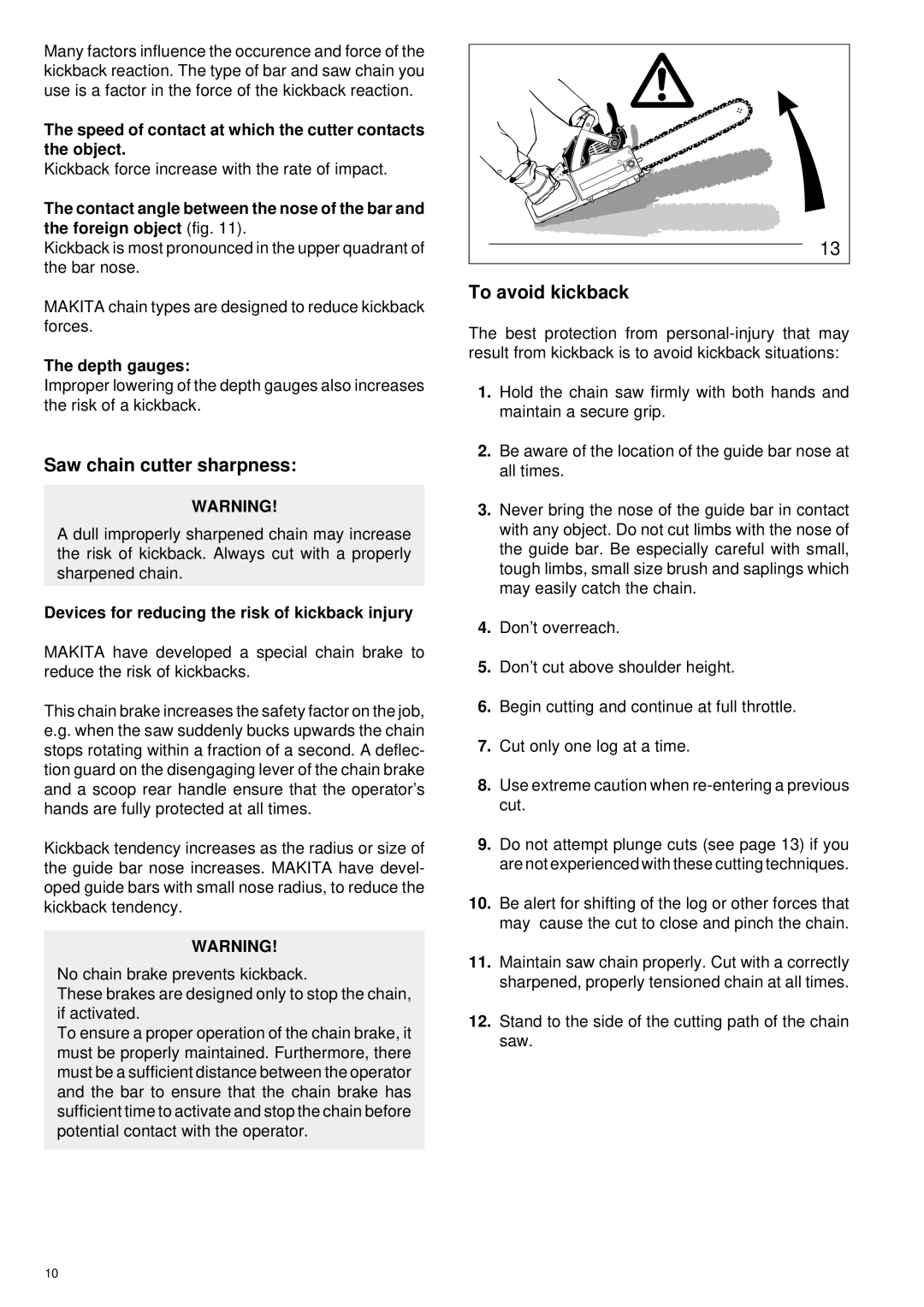DCS 400, DCS 341, DCS 401, DCS 340 specifications
Makita has been an industry leader in power tools, consistently delivering high-performance products that meet the needs of professionals and DIY enthusiasts alike. Among their impressive lineup of tools, the Makita DCS 340, DCS 401, DCS 341, and DCS 400 chainsaws stand out for their innovation, reliability, and ease of use. Each model offers unique features that cater to different applications and requirements.The Makita DCS 340 is designed for versatility and efficiency. Equipped with a powerful 34cc engine, it provides ample power for a variety of cutting tasks. The lightweight design enhances maneuverability, making it an excellent choice for both professionals and home users. One of the key features of the DCS 340 is its advanced anti-vibration system, which reduces fatigue during extended use. The easy-start mechanism further enhances user experience, allowing for quick and hassle-free operation.
Next in line is the DCS 401, which boasts a 40cc engine, offering elevated power for more demanding applications. This model is particularly effective for heavy-duty cutting tasks such as felling larger trees and processing timber. The DCS 401 features a chain brake for improved safety, as well as an ergonomic handle that ensures a comfortable grip and enhanced control. The automatic chain oiling system also ensures consistent lubrication for smoother operation and extends the lifespan of the saw.
The DCS 341 model is similar to the DCS 340 but offers added convenience with its 40cc engine and a slightly different configuration tailored for more intricate work. It includes a tool-less chain adjustment feature, enabling quick and easy chain tension adjustments without additional tools. This model's lightweight design is further enhanced by its compact build, making it ideal for a variety of outdoor jobs like pruning and trimming.
Lastly, the Makita DCS 400 features a robust 40cc engine as well but is specifically designed for professional-grade performance. It excels in demanding environments, thanks to its durable construction and advanced air filtration system. This model significantly reduces wear and tear and increases longevity. The DCS 400 also offers a fast idle for easier cold starts and a transparent fuel tank, allowing for quick visual checks on fuel levels.
Overall, whether you're a professional or a hobbyist, the DCS series from Makita provides reliable, powerful, and user-friendly options for all your cutting needs. Each model is designed with safety, comfort, and efficiency in mind, ensuring that you can tackle any project with confidence.

